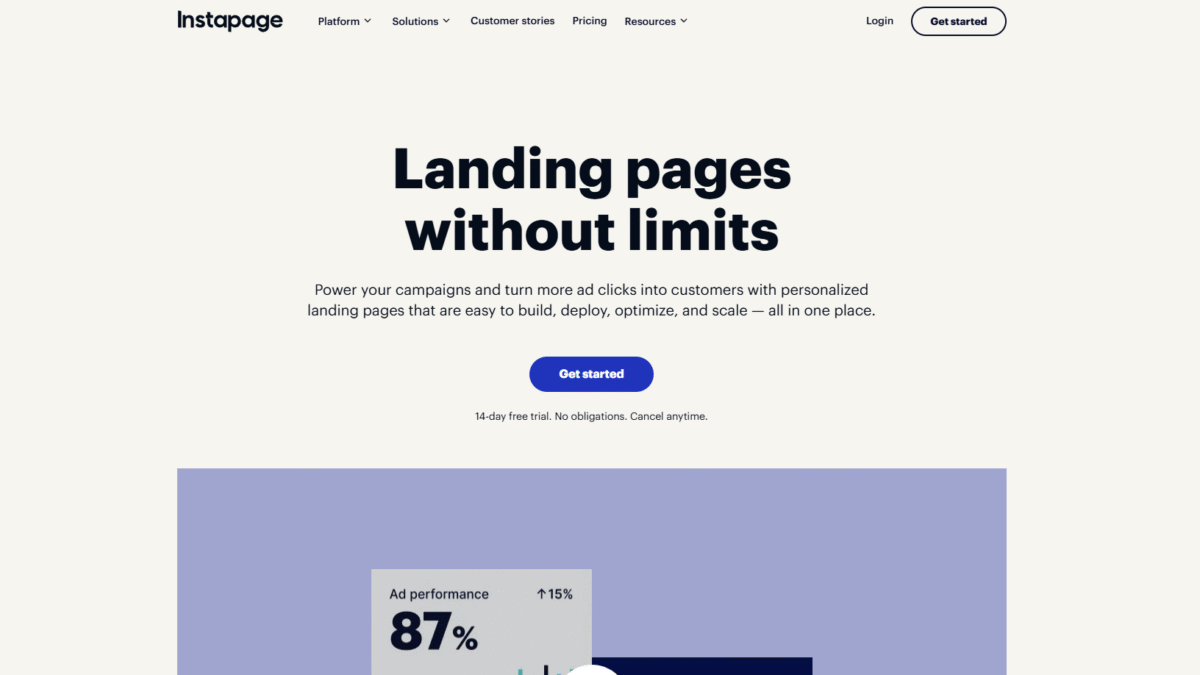
Random Landing Page Experiments That Convert Visitors
Searching for fresh, random landing page experiments that actually convert visitors? You’ve come to the right place. With Try Instapage Free for 14 days Today, you can rapidly spin up and test dozens of landing page variations without writing a single line of code.
Whether you’re a small business owner, SaaS marketer, or agency lead, introducing random experiments into your CRO process can uncover surprising winners. I’ve spent years refining landing pages, and today I’ll share proven methods to turn unpredictable tweaks into reliable revenue drivers.
What Makes Random Experiments So Powerful?
Most marketers rely on conventional A/B tests: headline A vs. headline B. But by embracing random experiments—for example, introducing entirely new layout variations or unexpected color swaps—you expand the creative field and avoid local optima. These truly random approaches can reveal combinations you never would have dreamed up manually.
Key Random Landing Page Experiments to Try
1. Randomized Hero Image Rotation
Swap out hero images for a set of unrelated visuals—photos, abstract shapes, or icons—on each visitor’s first session. Track which style resonates best and drives clicks to your call to action.
- Portrait shots vs. product mockups
- Illustrations vs. stock lifestyle photos
- Animated GIFs vs. static images
2. Random Heading Syntax
Generate three to five completely distinct headlines—question form, numbered list, bold statement—and assign them at random. This helps test tone, structure, and emotional triggers simultaneously.
3. Unpredictable Button Placement
Instead of always placing your primary CTA above the fold, randomize its position between top, side, and footer locations. You might find that a bottom-of-page placement creates curiosity and urgency.
4. Color-Chaos Experiment
Define a palette of 5–10 contrasting color schemes and shuffle them at random. Some combinations may clash by design, but those odd pairings sometimes catch the eye more effectively.
How Instapage Simplifies Large-Scale Random Tests
Running dozens of random variations manually can be a logistical nightmare. Instapage automates the process with AI-driven content creation, global blocks, and built-in A/B and AI experiments. With a few clicks, you can spin up 20+ page versions, deploy them, and let the platform dynamically allocate traffic to top performers.
Centralized analytics means you’ll see heatmaps, conversion rates, and visitor behavior in real time. That transparency turns a chaotic random trial into a data-driven CRO powerhouse. Try Instapage Free for 14 days Today and discover how effortless it is to run creative experiments at scale.
Best Practices for Random Experiments
- Set clear goals: Define primary metrics (CTR, sign-ups, revenue) before launching random tests.
- Limit variables per run: Change only one major element at a time to isolate impact.
- Leverage AI suggestions: Use Instapage’s AI content tool to generate unexpected copy variants quickly.
- Monitor statistical significance: Ensure you have enough traffic for valid insights.
- Rotate experiments regularly: Refresh your experiments every 2–4 weeks to maintain audience interest.
Scaling Random Tests Across Campaigns
Once you identify a winning random variation, global blocks in Instapage let you push that design or headline across multiple landing pages with a single update. This keeps your brand cohesive while still allowing for targeted tweaks per audience segment.
Dynamic text replacement then personalizes each page based on ad copy or visitor data, combining the element of surprise from random experiments with tailored messaging.
Conclusion
Incorporating random landing page experiments can unlock breakthrough wins and fresh creative angles. By using Instapage’s intuitive builder, AI features, and robust analytics, you’ll accelerate your learning loop and turn more ad clicks into customers. Ready to revolutionize your approach? Try Instapage Free for 14 days Today and start testing beyond the usual A/B split.
